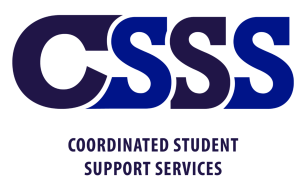Welcome to the HIV/Sexual Health Education Homepage
HIV/STD prevention and sexual health education is an essential component of students’ physical, social and emotional development. Health education programs that include age and developmentally appropriate, medically accurate information on a broad set of topics related to sexuality, including abstinence, contraception and disease prevention provide students with opportunities for developing skills as well as learning information to promote their health and well-being as they mature into sexually healthy adults.
According to Kirby (2007), research on sexual health education has shown that:
• sexual health education that at least provides information about abstinence and contraception can delay the onset of sexual activity among teens, reduce their number of partners, and increase safer sex practices and contraceptive use when they do become sexually active; and
• conversely, teaching young people about sex and contraception does not lead to early sexual activity or experimentation (Kirby, 2007, p.122-123).
HIV/AIDS Resources
According to the Centers for Disease Control and Prevention (CDC), there are approximately 1.2 million people in the U.S. living with HIV, and about 13% are unaware. There are also an estimated 37,000 newly diagnosed people living with HIV in the United States. You can learn more about HIV/AIDS and prevention at the Nebraska Department of Health and Human Services website.
HIV Prevention And Surveillance
The Nebraska Reproductive Health Program supports education and preventative health practices that improve reproductive health outcomes, such as decreasing STDs/STIs, preventing unintended pregnancies, promoting appropriate birth spacing, and encouraging a healthy lifestyle.
Nebraska Reproductive Health Program
National Sex Education Standards, Second Edition
The first edition of the Standards outlined the foundational knowledge and skills students need to navigate sexual development and grow into sexually healthy adults. The updated NSES reflect advancements in research regarding sexual orientation, gender identity, social, racial, and reproductive justice, and the long-term consequences of stigma and discrimination. Other additions include: advances in medical technology, the emergence of digital technologies, and the growing impact of social and sexually explicit media on relationships.
Inclusive and honest sex education allows young people to practice the communication, decision-making, and negotiation skills they need to create healthy relationships—both sexual and nonsexual—throughout their lives.
National Sexuality Education Standards
‘A cure of HIV is possible’: UNMC, Temple researchers eliminate virus in humanized mice
Jul 3, 2019 – For the first time since the 1980s AIDS epidemic began, researchers say they’ve taken an important step toward a possible cure for HIV, thanks to technologies developed in labs at the University of Nebraska Medical Center and Temple University.
People living with HIV currently have to take drugs every day for the rest of their lives to keep the virus at bay.
But the virus continues to hide out in some tissues, its DNA tucked into that of its host, ready to flare again if the drugs are stopped.
Now researchers at UNMC and Temple University say they have eliminated HIV for the first time from the genomes of a small number of humanized mice using a combination of two different therapies.
“This is proof of concept that a cure of HIV is possible,” said Dr. Howard Gendelman, chairman of UNMC’s pharmacology and experimental neuroscience department and a senior investigator on the study.
The researchers first used a slow-release, long-lasting formulation of HIV drugs developed at UNMC to suppress the virus in infected mice and then followed with a gene-editing therapy that Temple scientists in Philadelphia created to cut the virus’ DNA from their genomes.
Of the mice that received the treatment, about a third showed no signs of HIV infection for up to five weeks after treatment, according to a report published Tuesday in the journal Nature Communications. The research is receiving international attention.
Both scientists acknowledged that plenty of work lies ahead, starting with more studies in animals. But they said combining the two therapies provides a “clear path to move ahead” in further trials in animals and possibly clinical trials in humans.
“What we’ve done is we’ve showed that HIV can be cured,” Gendelman said.
Kamel Khalili, chairman of the neuroscience department at Temple’s Lewis Katz School of Medicine in Philadelphia, said the fact that no technology since the AIDS epidemic began has been able to eliminate HIV has created the impression that the disease is incurable.
“This is the first time we’ve shown together the disease can be eliminated if we use a combination therapy,” said Khalili, the study’s other senior investigator.
AIDS at 30: The U.S. Epidemic
“AIDS at 30: The U.S. Epidemic” chronicles the thirty years since the first cases of a rare pneumonia found in young gay men were reported by the U.S. Centers for Disease Control. This four minute video highlights landmarks in the history of AIDS from the discovery of the AIDS virus and the banning of Ryan White from attending school to the early twenty-first century when the CDC recommends HIV testing for virtually every American.
“AIDS at 30: The U.S. Epidemic”
For more information, please contact: Wyatt Morse at wyatt.morse@nebraska.gov.





